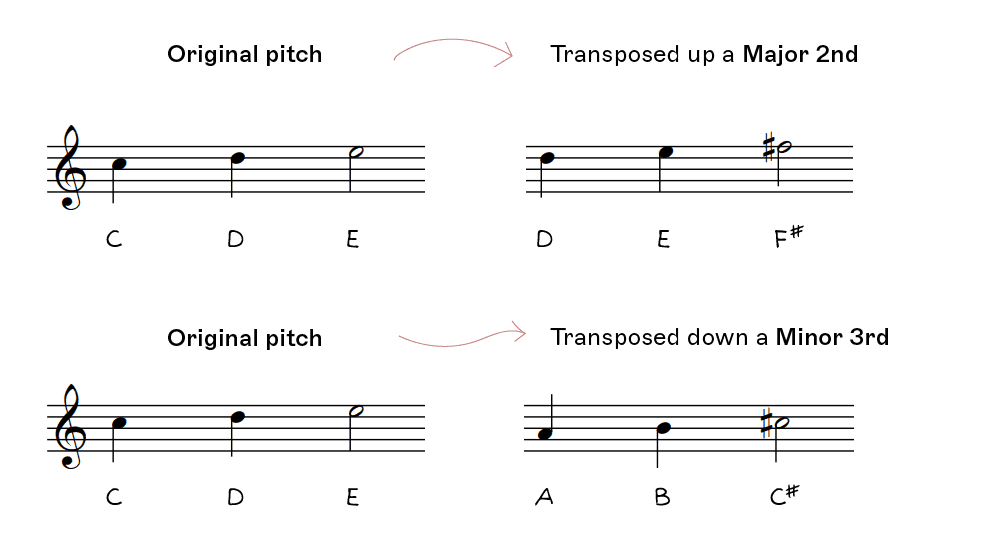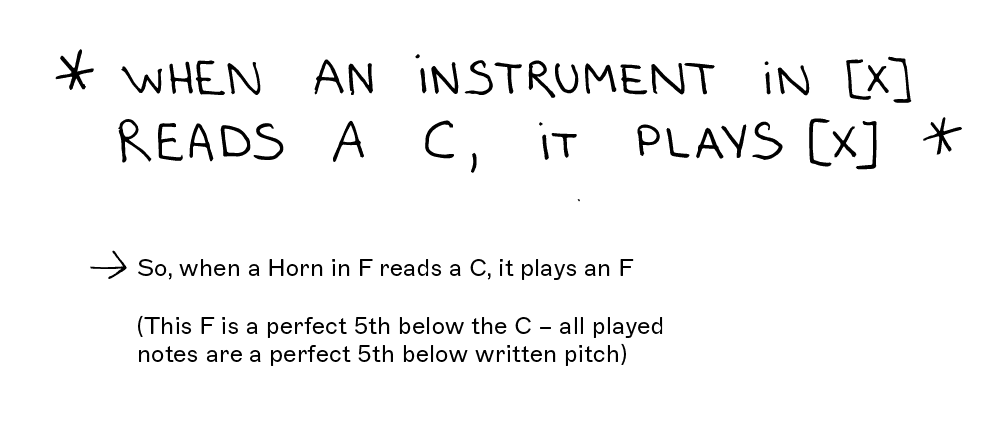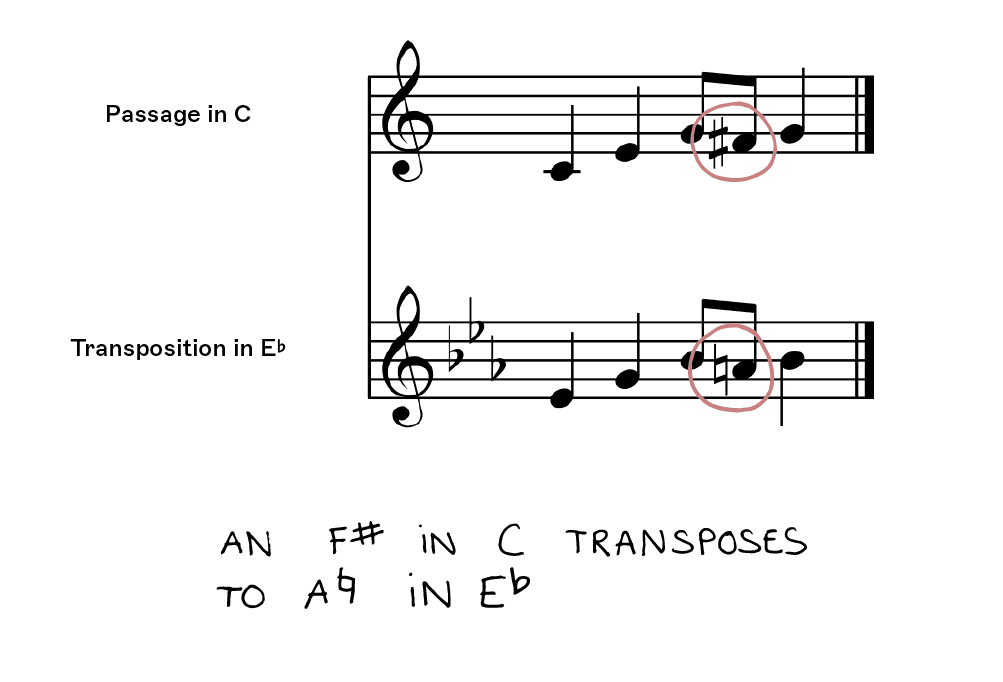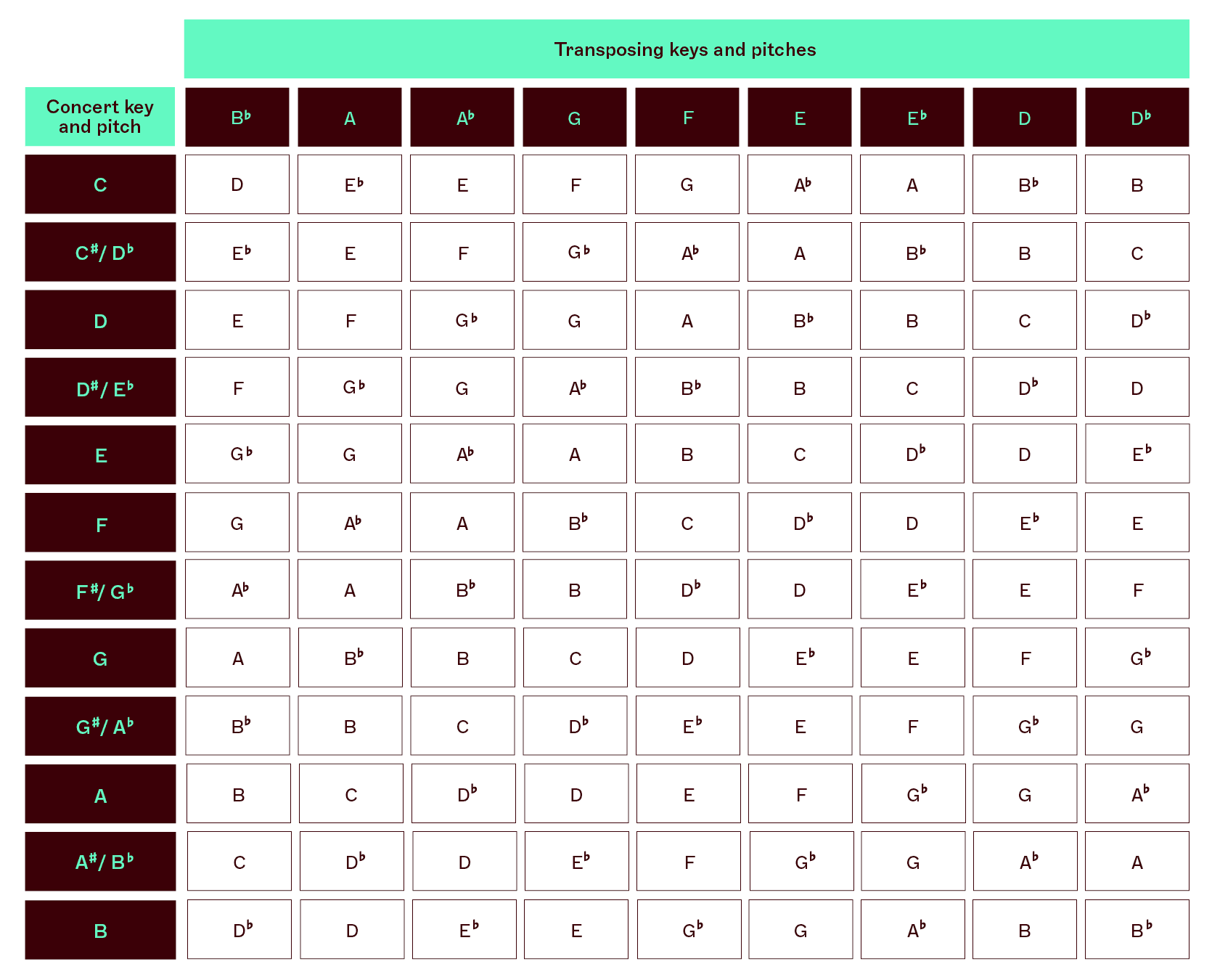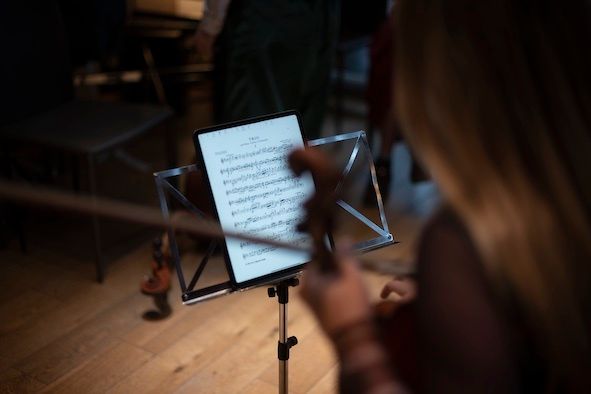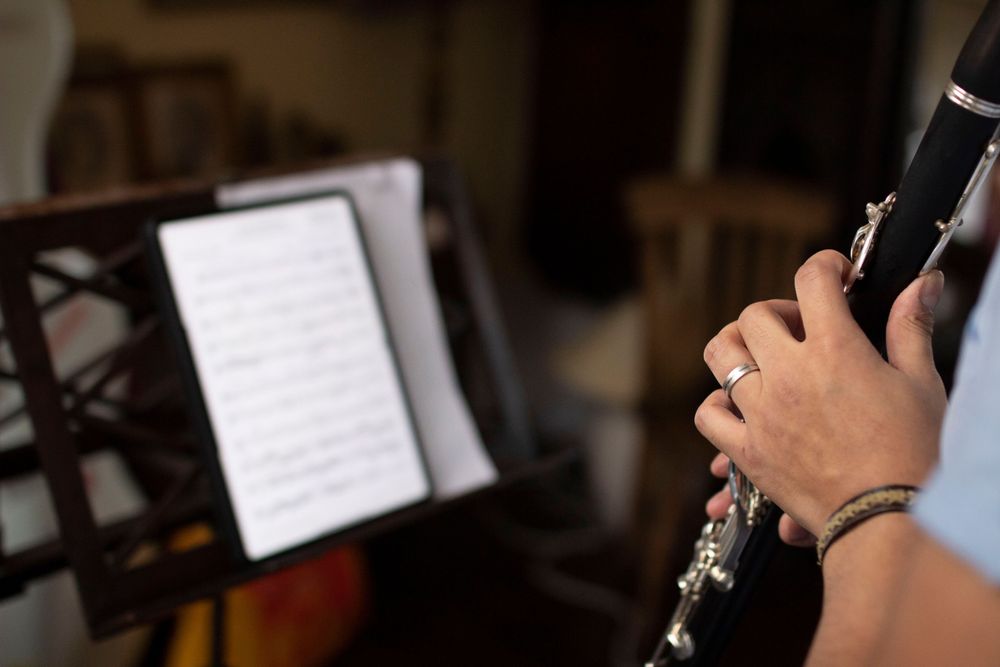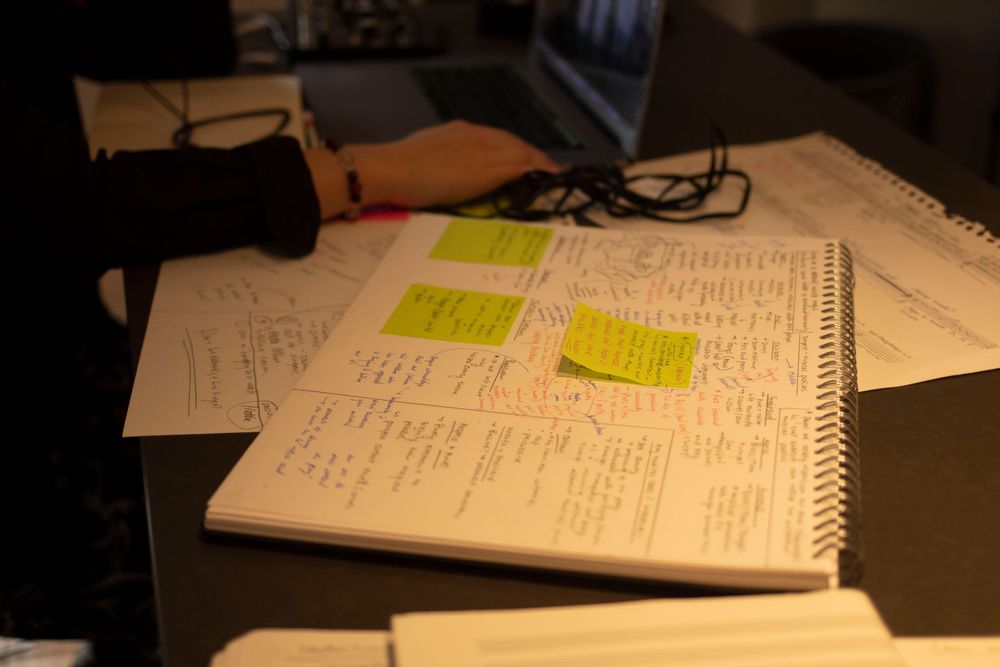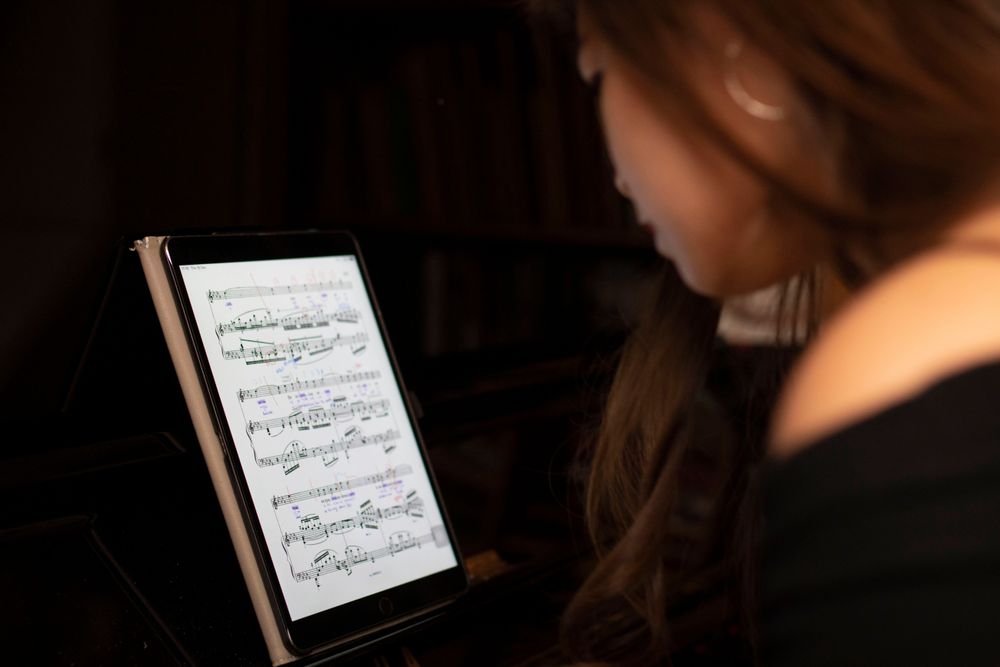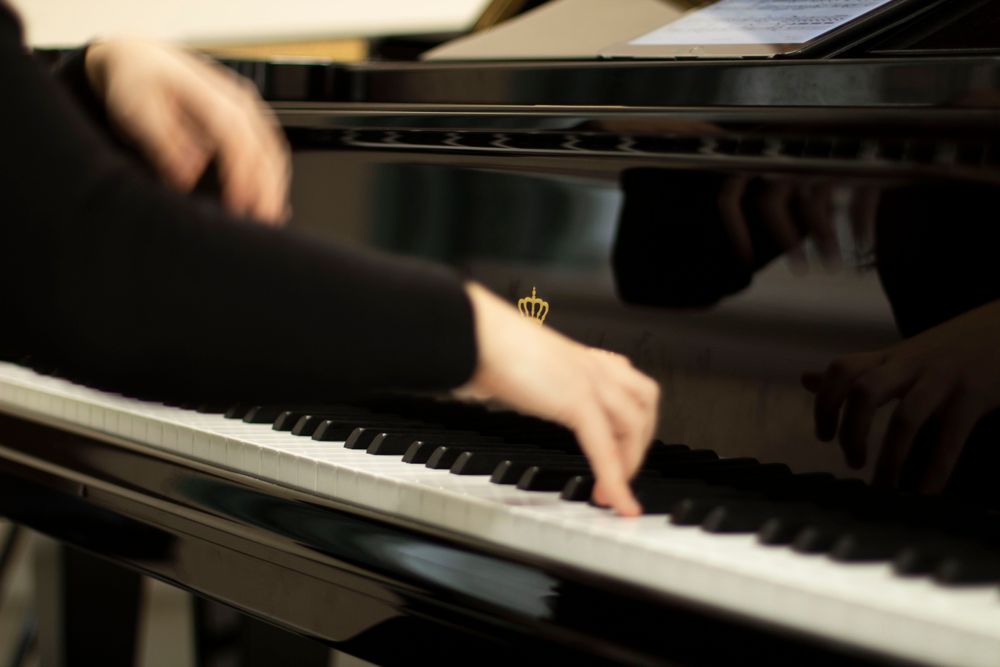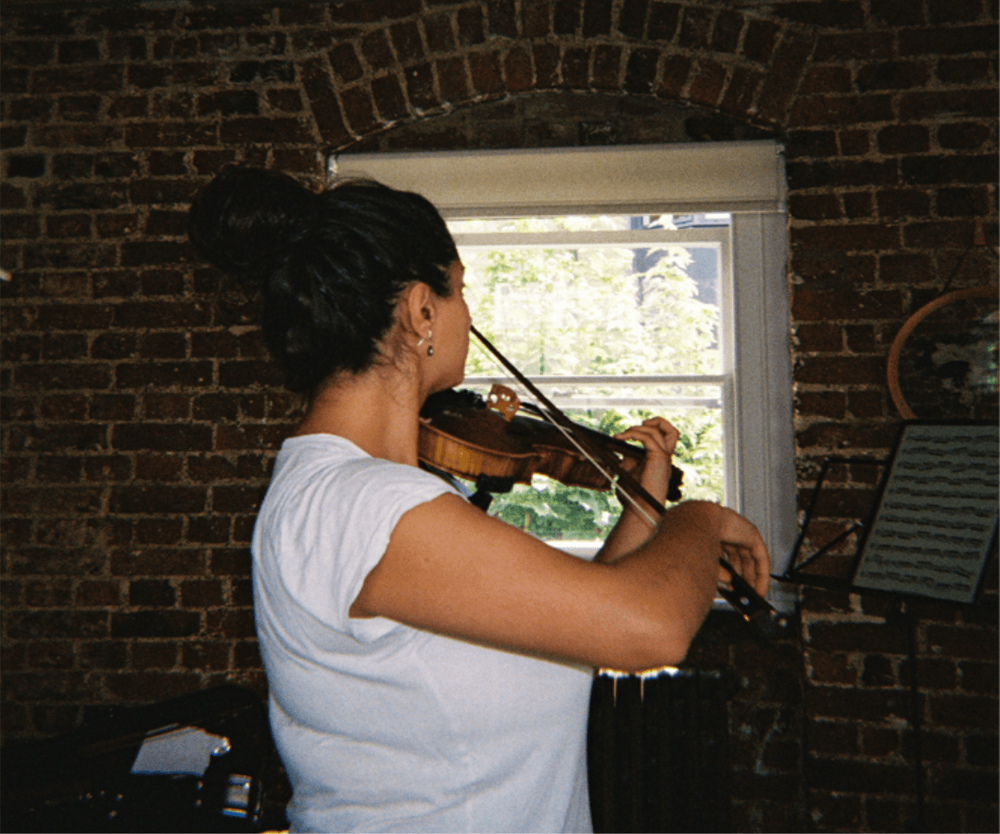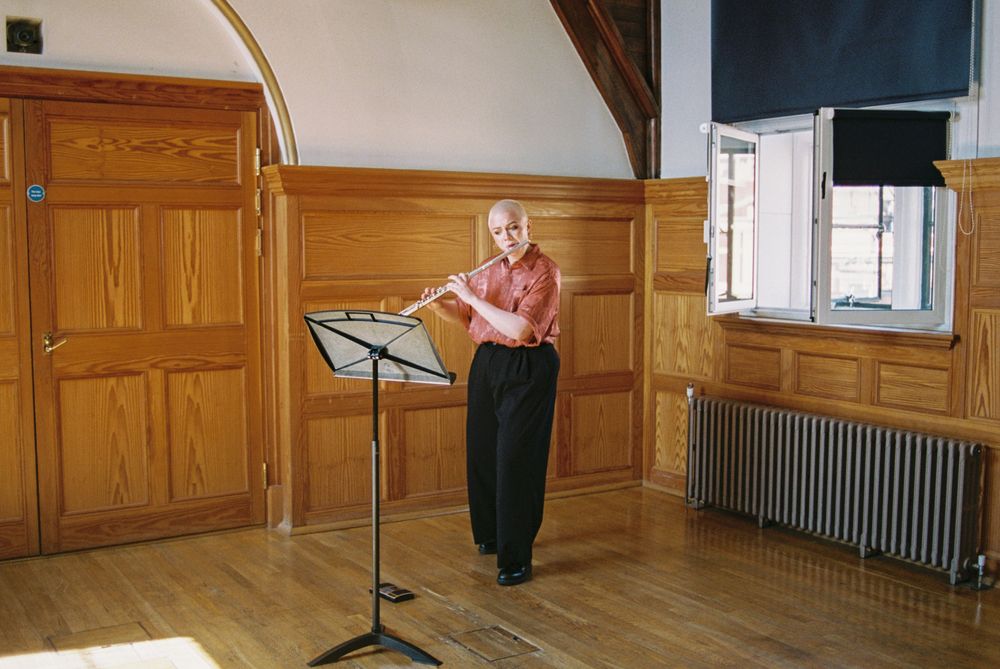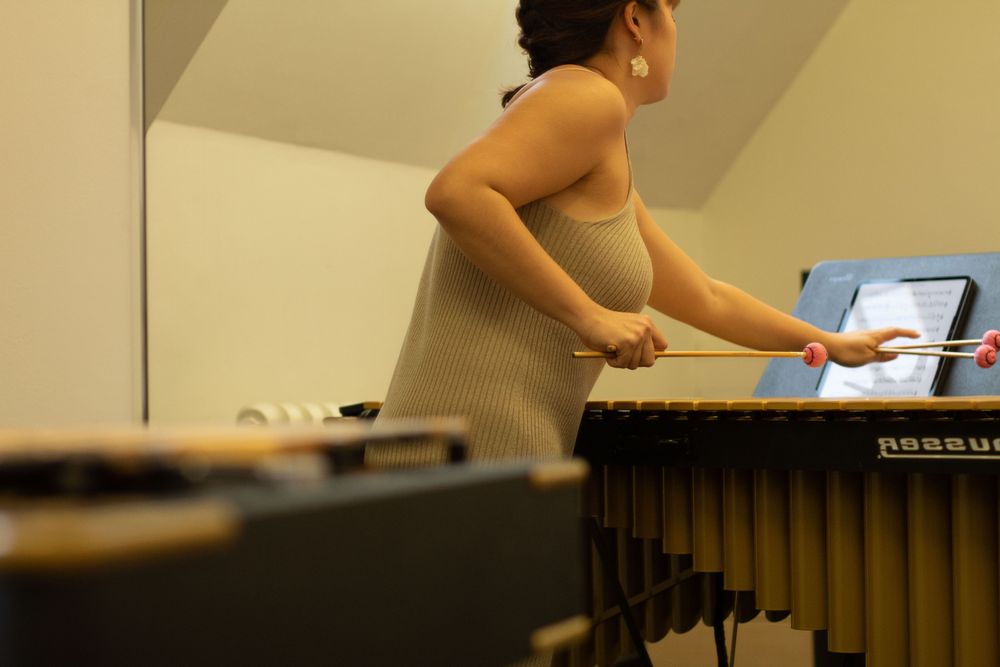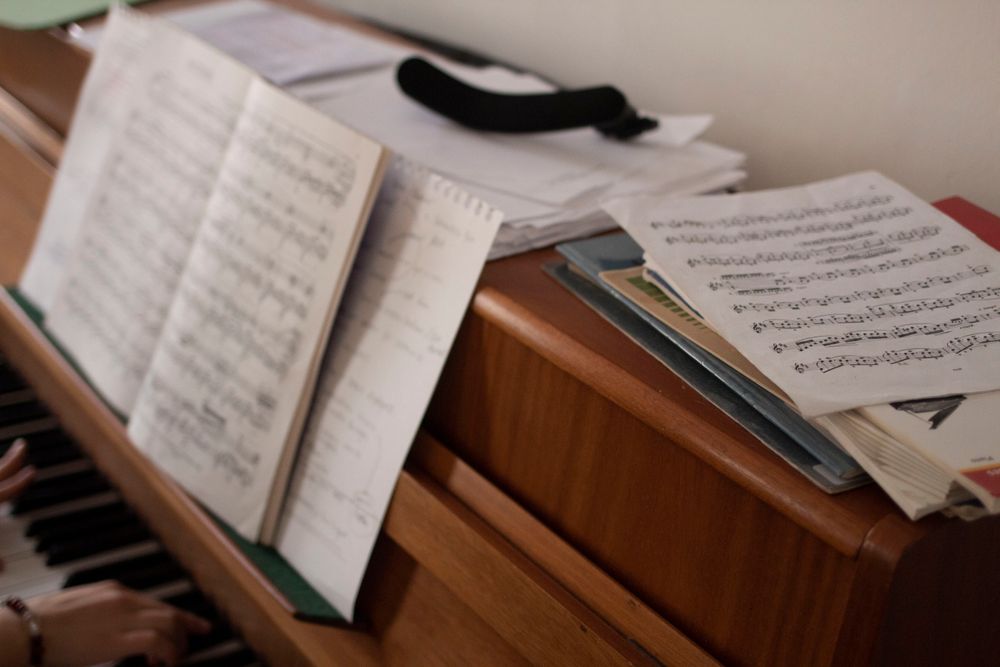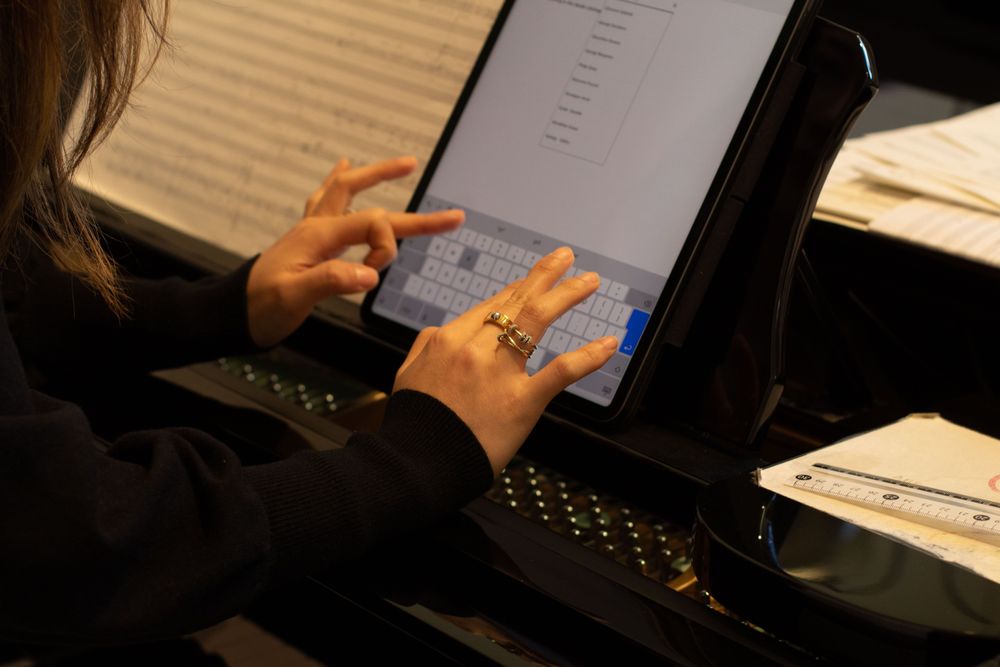Let’s say we have a short musical phrase comprising three notes played one after the other: C, D and E, as above. If we transpose it up by two semitones, we end up with D, E and F-sharp. If we transpose it down by three semitones, we get A, B and C-sharp.
That’s transposition. Not so bad, right?
Why do we transpose?
Transposition is used for a range of reasons, but it is probably most commonly required when music is to be played by instruments that transpose.
Transposing instruments read notation that isn’t written at concert pitch. This means that when a player reads and plays a note that indicates a certain pitch on one of these instruments, the pitch of the note that’s actually sounded is different.
Now that might sound puzzling. But it allows players of instruments that come in a range of shapes and sizes to use the same fingering patterns on the different versions of their instrument - and still sound the right notes.
Sometimes transposition can also help to make a difficult piece of music easier to play. Let’s go into more detail about instances when transposition is necessary.
When to transpose music
As a musician, you might find yourself in a situation that calls for transposition. Above all else, transposition is a tool for performance. So you’ll only really need to transpose when you’re performing, or writing music that’s going to be performed.
If you’re writing music for transposing instruments such as saxophone, trumpet, clarinet, or French horn, and you’re expecting players to read your music and play it, then you’ll need to transpose the parts.
You might be a player of one of these instruments yourself, looking to play a piece that’s written either in concert pitch, for an instrument that transposes differently, or in a register that isn’t suitable for your instrument. To play the music at the correct or appropriate pitch on your instrument, transposition is required.
Transposition also comes in handy when some music is difficult to play on an instrument for one reason or another. It might make for a less awkward fingering on a guitar, for example, or make certain wind instruments sound more in tune.
Sometimes vocalists find that music is slightly too high or low for them to sing. In these cases, transposition allows them to sing the same music in a register that they’re more comfortable in.
These are the primary functions of transposition. If any of these situations sound familiar, then you’ll probably need to transpose your music, though you may not necessarily have to go to all that trouble.
What to consider before transposing music
You can avoid the sometimes arduous process of transposing music yourself. If you’re putting together a score that is designed only to be read, then you don’t necessarily need to transpose the parts. In fact, writing them at concert pitch will probably make it easier to read for most individuals.
But, if you are writing for transposing instruments, you might want to transpose the parts anyway - even if it’s not for performance. Players could then read your work and gauge how playable it is.
Some instruments don’t always demand manual transposition. You don’t always need to transpose for the guitar, for example. A device called a ‘capo’ allows you to shift music up or down in pitch without having to learn new fingering patterns.
If you’re working with notation software, transposition can be carried out automatically, which will save you the hassle of doing it yourself. Some electronic keyboards have built-in transposition functions as well. It’s also worth checking the nkoda library to see if it has the work you’re looking for transcribed specifically for your instrument.
If none of these scenarios is applicable to you, you’ll have to transpose the music you’re working with yourself. Most music is tonal and written in a key, so we’re going to run through a simple method that works by manipulating the key signature.
How to transpose music
Transposing tonal music is quick and easy. Just determine the transposed key using a transposition chart and rewrite the passage of music in the new key. Check the interval between the home notes of the two keys, and ensure that every note in the transposition is separated by the same interval from its corresponding note in the original passage.
That’s the process in a nutshell, but we’re going to outline step-by-step it in more detail below. Whatever the reason you’re transposing, whether you’re composing or playing, the process is the same, so don’t worry.
Step 1: Determine the transposed key
The first step in transposing tonal music is determining the key to transpose to. If you’re writing music for transposing instruments, this step is easy to carry out.
When a transposing instrument reads a C, it plays the note that’s in its name - when a clarinet in B♭ reads a C, for example, it plays a B♭. And all the other notes it plays will accordingly sound two semitones lower than written.
